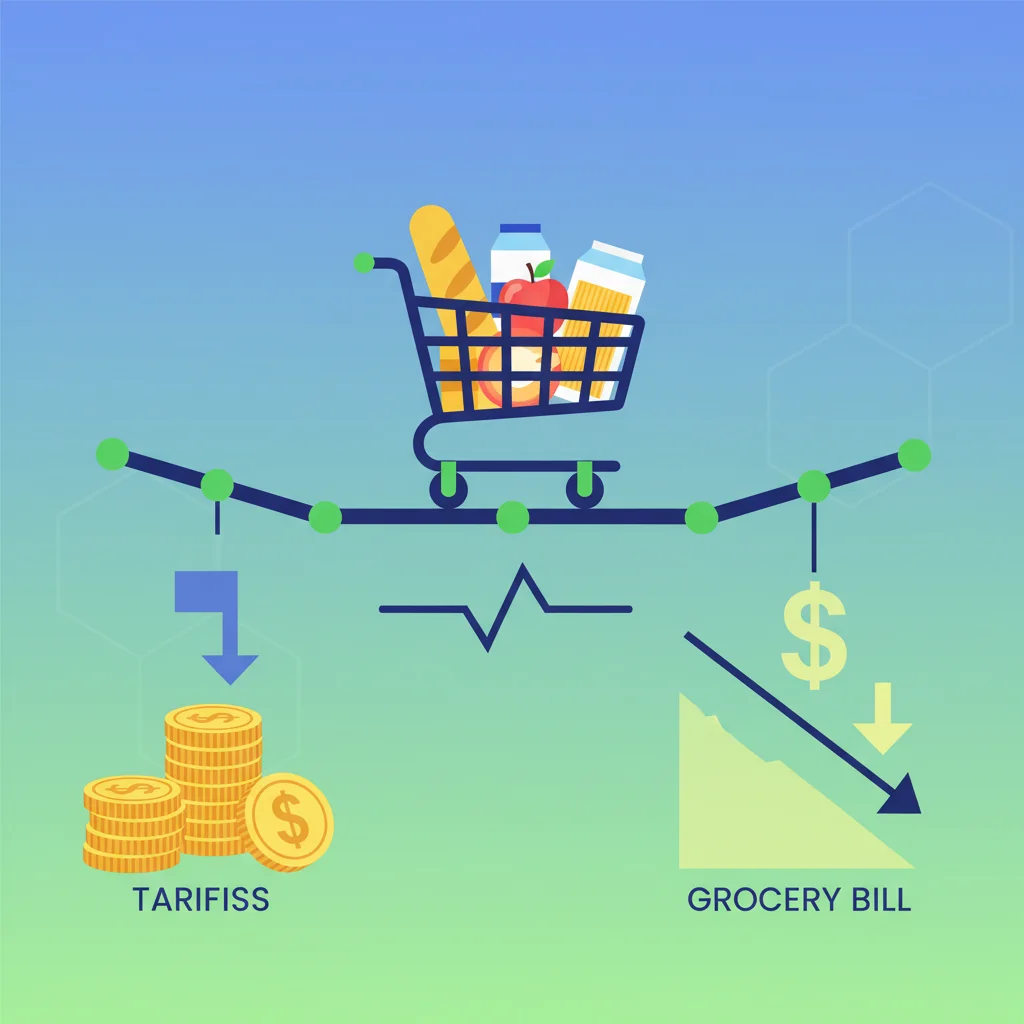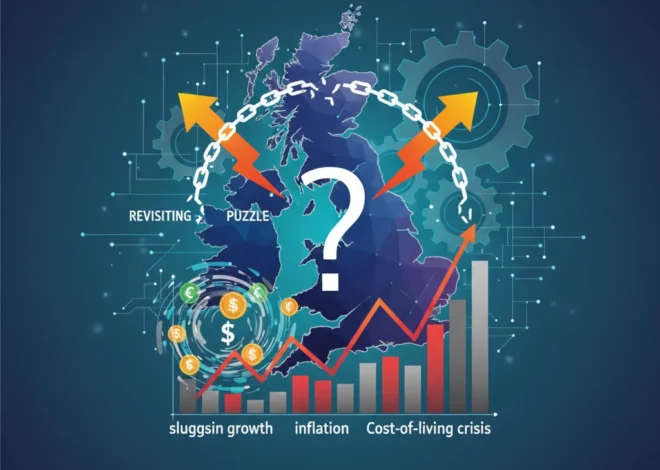
The Tariff Tightrope: Will a Policy Shift Really Cut Your Grocery Bill?
The persistent sting of high food prices has become a defining feature of the modern consumer experience. Every trip to the grocery store feels like a fresh assault on the household budget, leaving many to wonder when relief will arrive. Against this backdrop, political discussions around tariff rollbacks have ignited a fierce debate. The central premise seems simple: remove taxes on imported goods, and prices should fall. The White House’s signal to potentially lower tariffs on certain food items, as highlighted by recent political discourse, is a move laden with economic and political implications. But for the average shopper, the investor, and the business leader, the critical question remains: Is it really that straightforward?
The answer, embedded deep within the complex machinery of global trade, supply chain logistics, and corporate strategy, is far from a simple “yes” or “no.” While a tariff rollback is a significant lever to pull, it’s just one of many gears turning in the vast engine of the global economy. To truly understand its potential impact, we must look beyond the political headlines and dissect the intricate journey of a product from a foreign farm to your dinner table, examining the powerful forces that influence its final price.
Understanding Tariffs: A Tax on the Global Supply Chain
At its core, a tariff is a tax imposed by a government on imported goods. The primary goals are typically to protect domestic industries from foreign competition and to generate revenue. During the previous administration, tariffs were wielded as a key tool in a broader strategy to renegotiate trade deals and address perceived imbalances, most notably with China. These tariffs were applied to a wide array of goods, including many food products and agricultural inputs.
A common misconception is that the exporting country pays the tariff. In reality, the financial burden falls on the domestic company that imports the goods. This importer must pay the tax to the government to get the products into the country. From there, the cost is almost always passed down the line: from the importer to the wholesaler, from the wholesaler to the retailer, and ultimately, from the retailer to the consumer in the form of higher prices. This cascade effect is a fundamental principle of economics and is a key reason why tariffs are often cited as a driver of inflation.
Consider the journey of an imported avocado. A tariff adds a direct cost to the importer, who then increases their price to the distributor. The distributor, facing higher costs, charges the grocery store more. The grocery store, to protect its own profit margins, raises the price you see on the shelf. The tariff becomes an invisible ingredient, but one that you certainly pay for.
The Case for Lower Prices: Following the Money
The argument for consumer relief through tariff rollbacks is logically sound. By removing that initial tax at the point of entry, the entire cost cascade should, in theory, reverse. The importer’s cost drops, allowing them to lower prices for wholesalers, who can then pass those savings to retailers, resulting in a lower sticker price for the consumer.
The potential impact is not trivial. Certain specialty foods, seafood, and specific agricultural products have been subject to tariffs ranging from 7.5% to 25% (source). Removing such a significant cost could lead to noticeable price reductions on affected items, assuming all other factors remain constant.
To illustrate the potential impact, let’s examine a selection of food and agriculture-related categories that have been affected by recent trade policies. The following table outlines some of these goods and the typical flow of tariff costs.
| Product Category | Typical Origin Country (Subject to Tariffs) | Potential Supply Chain Impact | Consumer Price Implication |
|---|---|---|---|
| Certain Seafood (e.g., Tilapia, Shrimp) | China | Reduced import costs for seafood processors and distributors. | Potential for lower prices in frozen and fresh seafood sections. |
| Specialty Fruits & Nuts (e.g., Garlic, Pecans) | China | Lower costs for companies that use these as ingredients in processed foods. | Possible price reduction on specific produce and packaged goods. |
| Processed Vegetables | China / European Union | Decreased input costs for manufacturers of canned goods and frozen meals. | Could lead to more stable or slightly lower prices for processed foods. |
| Wines and Cheeses | European Union | Significant cost savings for importers and specialty retailers. | Noticeable price drops for consumers of these European goods. |
This direct cost reduction is the primary hope for consumers. For investors, this could signal a positive turn for companies in the food retail and restaurant sectors, as lower input costs could boost margins or be used to drive sales through lower prices. The effect on the stock market could be a rally in consumer discretionary and staples sectors.
Headwinds and Hurdles: Why Your Grocery Bill Might Not Budge
While removing tariffs eliminates one layer of cost, it doesn’t address the myriad other factors that have conspired to keep food prices stubbornly high. This is where the straightforward economic model collides with the complexities of the modern global economy.
Persistent Inflationary Pressures
Tariffs are only one ingredient in the recipe for high prices. Other, more significant costs continue to exert upward pressure:
- Energy Costs: The price of diesel for trucks and ships, and the cost of energy to power farms and factories, remain elevated. These costs are embedded in every single food item.
- Labor Costs: A tight labor market has driven up wages across the board, from farmworkers to truck drivers to grocery store clerks. This is a significant operational cost for every business in the supply chain.
- Global Logistics: While pandemic-era shipping bottlenecks have eased, global supply chains remain fragile and susceptible to geopolitical shocks. As a result of geopolitical conflicts, shipping routes have been altered, increasing both time and fuel costs.
Corporate Strategy and Market Dynamics
Companies don’t operate in a vacuum. Once prices have been raised to a certain level and consumers have adapted, there is a strong incentive to maintain those prices to improve profit margins. This phenomenon, sometimes dubbed “greedflation,” suggests that businesses might absorb the tariff savings rather than passing them on. Furthermore, if a tariff rollback harms domestic producers, it could reduce overall supply, potentially leading to price increases for U.S.-grown products that offset the savings from imports.
This complex interplay of factors is crucial for anyone involved in investing or finance. A policy change that seems positive on the surface could have muted or even counterintuitive effects when filtered through real-world market dynamics.
From Napkin Sketch to Market Dominance: The Financial Trajectory of EasyJet at 30
The Broader Market and Investment Implications
Beyond the checkout counter, a significant shift in U.S. trade policy would send ripples across the financial markets. Investors and business leaders must consider the second- and third-order effects.
Sector Winners and Losers
A broad tariff rollback would create a clear divergence in the stock market.
- Potential Winners: Large retailers (Walmart, Target, Costco), restaurant chains, and food manufacturers who rely heavily on imported goods and ingredients could see their cost of goods sold decrease, potentially boosting profitability.
- Potential Losers: Domestic agricultural producers who were shielded from foreign competition by the tariffs could face intense price pressure. This could negatively impact companies in the U.S. farming and agriculture sector and the banking institutions that provide them with significant loans.
The Role of Financial Technology
In this volatile environment, the importance of financial technology becomes paramount. Businesses engaged in international trade rely heavily on fintech solutions for currency hedging, supply chain financing, and managing price volatility. As trade policies shift, the demand for sophisticated tools that can model risk and optimize procurement strategies will only increase. Similarly, technologies like blockchain offer the potential for more transparent and resilient supply chains, allowing businesses and consumers to better track the true cost components of their products, from farm to fork. Efficient trading platforms and analytics are essential for navigating these policy-driven market shifts.
A New Pour: Can a Governance Guru Reignite Growth at Spirits Giant Diageo?
Conclusion: A Piece of a Much Larger Puzzle
Will a rollback of Trump-era tariffs on food items lower your grocery bill? The most honest answer is: perhaps, but likely not by as much as you’d hope. The move would certainly remove a direct, government-imposed cost from the supply chain, a welcome relief in the fight against inflation. It would be a tangible step that could lead to price reductions on specific imported goods.
However, tariffs are not the sole villain in the story of high food prices. The powerful currents of global energy costs, domestic labor expenses, and complex corporate pricing strategies will continue to shape the final price you pay. A policy shift on tariffs is a significant political and economic signal, but it is ultimately just one piece of a much larger and more complicated puzzle. For consumers, any relief will be welcome. For investors and business leaders, the focus must be on the nuance—understanding which sectors will benefit, which will face new challenges, and how the intricate dance of global economics will ultimately play out on balance sheets and stock tickers.


